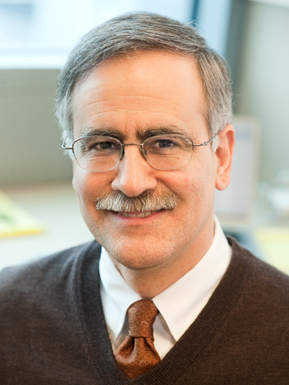
Associate Professor
Provost Faculty Fellow for Undergraduate Affairs
Research
the fundamental chemical principles involved, as well as the potential for converting inexpensive aliphatic hydrocarbons to valuable high-end chemical products. A challenging goal in the development of new oxidation processes is the direct utilization of dioxygen at ambient temperatures and pressure in metal-based systems that preclude non-selective free-radical chain pathways. Research in the Caradonna Group is centered on understanding the mechanism of action of non-heme iron monooxygenases and the concomitant development of synthetic analogs, focusing on the chemistry involved in the activation of O2 at a metal center and the tightly coupled oxidation of substrate C-H to C-OH bonds. Areas of interest include:
- Non-Heme Iron Tetrahydropterin-Dependent Aromatic Amino Acid Mono-oxygenases – Tetrahydrobiopterin-dependent systems occupy several interesting niches in biological chemistry, as metalloproteins that activate O2 for highly specific oxidations, as regulators for aromatic amino acid metabolism, and as mediators for the health and proper functioning of the brain.
- Binuclear Non-Heme Iron Catalysis – Efforts focus on developing a molecular- and electronic-level understanding of the reactivity properties of these ferrous complexes and their ability to directly activate dioxygen (or utilize activated forms of oxygen such as oxygen atom donor molecules, peroxides and, peracids) to form metal-based oxidants that readily oxidize organic substrates.
- Mononuclear Non-Heme Iron Catalysis – Continued investigation of our iron catalyst that mimics two fundamental process exhibited by a subset of non-heme iron monooxygenases: (i) the efficient two-electron reduction of dioxygen and formation of a metal-based oxidant via the conversion of a bound a-ketoacid (e.g. a-ketoglutarate) to CO2 and the corresponding carboxylic acid (succinate), and (ii) the reaction of the metal-based oxidant with substrates to regenerate the catalyst (Green Oxidation Catalytic System U.S. Patent 10,428,043 B2 issued 10/1/2019)
- Heterogeneous Catalysis – Conversion of homogeneous catalysts to heterogeneous catalysts for flow chemistry applications.
Publications
Techniques & Resources
We utilize a broad-based approach that includes chemical/biochemical, molecular biological, biophysical (advanced spectroscopic), and computational techniques to develop a global understanding of the intrinsic electronic and structural characteristics of enzyme active sites in order to facilitate the development of small-molecule synthetic catalysts that operate in a similar manner. Mechanistic studies include variable temperature stopped-flow kinetic studies coupled with rapid-freeze-quench trapping of species identified to be on (or in equilibrium with species on) the catalytic cycle for their investigation by advanced spectroscopic methods.
What’s Next for Graduates of the Caradonna Group?
Twenty-six graduate students have completed their Ph.D. dissertations while five postdoctoral fellows have completed their studies.
Twenty Ph.D. students have continued their studies by completing postdoctoral positions, while five have directly pursued careers in either the chemical/pharmaceutical/scientific consulting industry with one pursuing a law degree. Seven former graduate students and three postdoctoral fellows are currently university/college professors.
Recent former graduate students include:
- Dr. Laura A. Cunningham, Senior Chemist, American Boronite Corporation
- Dr. Douglas T. Nolan, Postdoctoral Fellow, Takada Pharmaceuticals, Boston MA
- Dr. Mary Malloy, Analyst, Locust Walk, Boston MA
- Dr. Lauren Gregor, Postdoctoral Fellow, Prof. Alexander Miller, UNC Chapel Hill
- Dr. Joshua McNally, Postdoctoral Fellow, DOE Idaho National Lab
- Dr. Sarah Soltau, Postdoctoral Fellow, Dr. Lisa Utschig, Argonne National Lab
- Dr. Paul Tarves, Postdoctoral Fellow, Prof. Nathan West, Univ. of the Sciences Philadelphia
- Dr. Gulbenk Anarat-Cappillino, Postdoctoral Fellow, Prof. Elizabeth Sattely, Stanford University
- Dr. Patrick Cappillino, Postdoctoral Fellow, Advanced Materials Research, Sandia Laboratory, Livermore